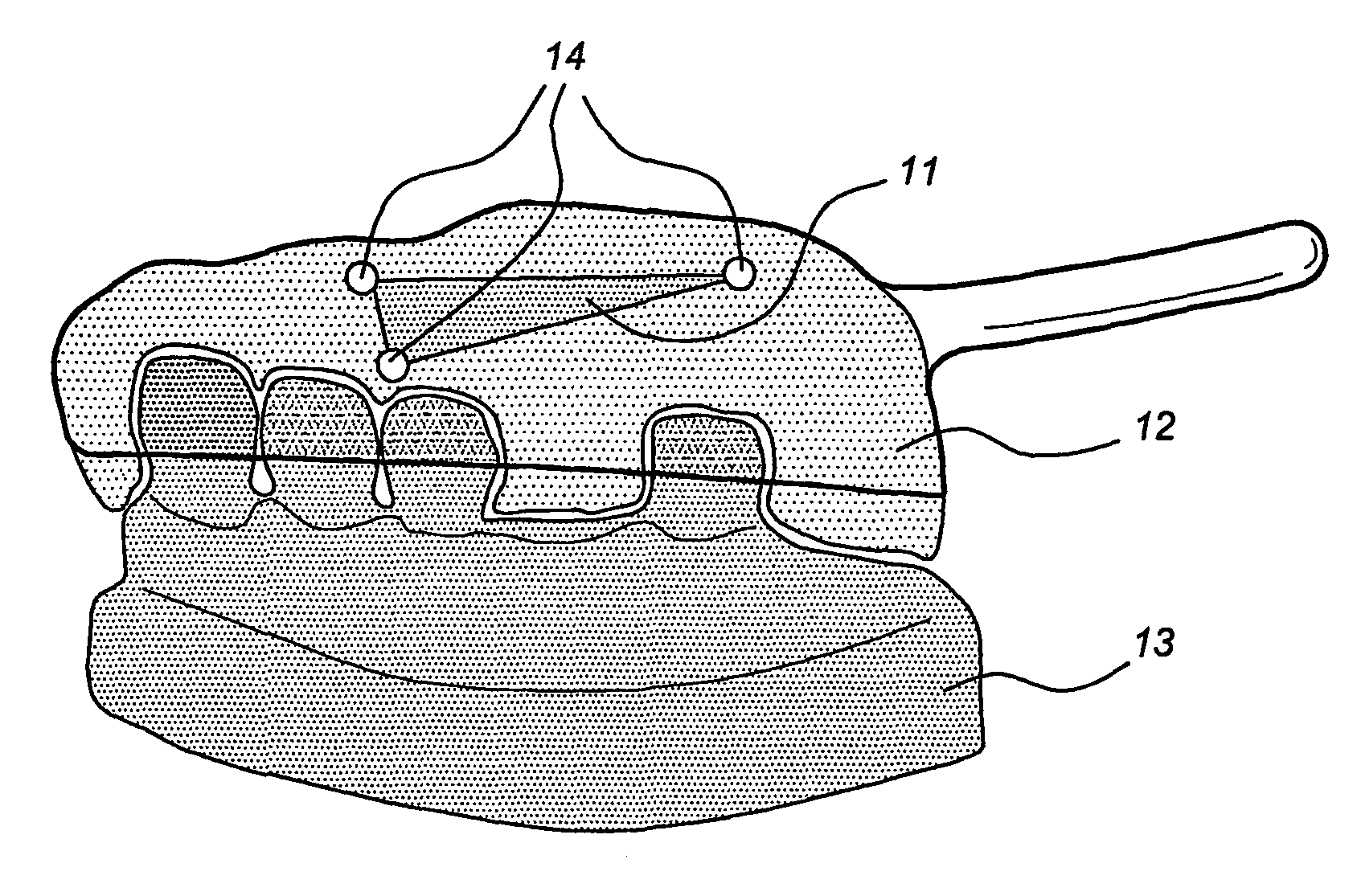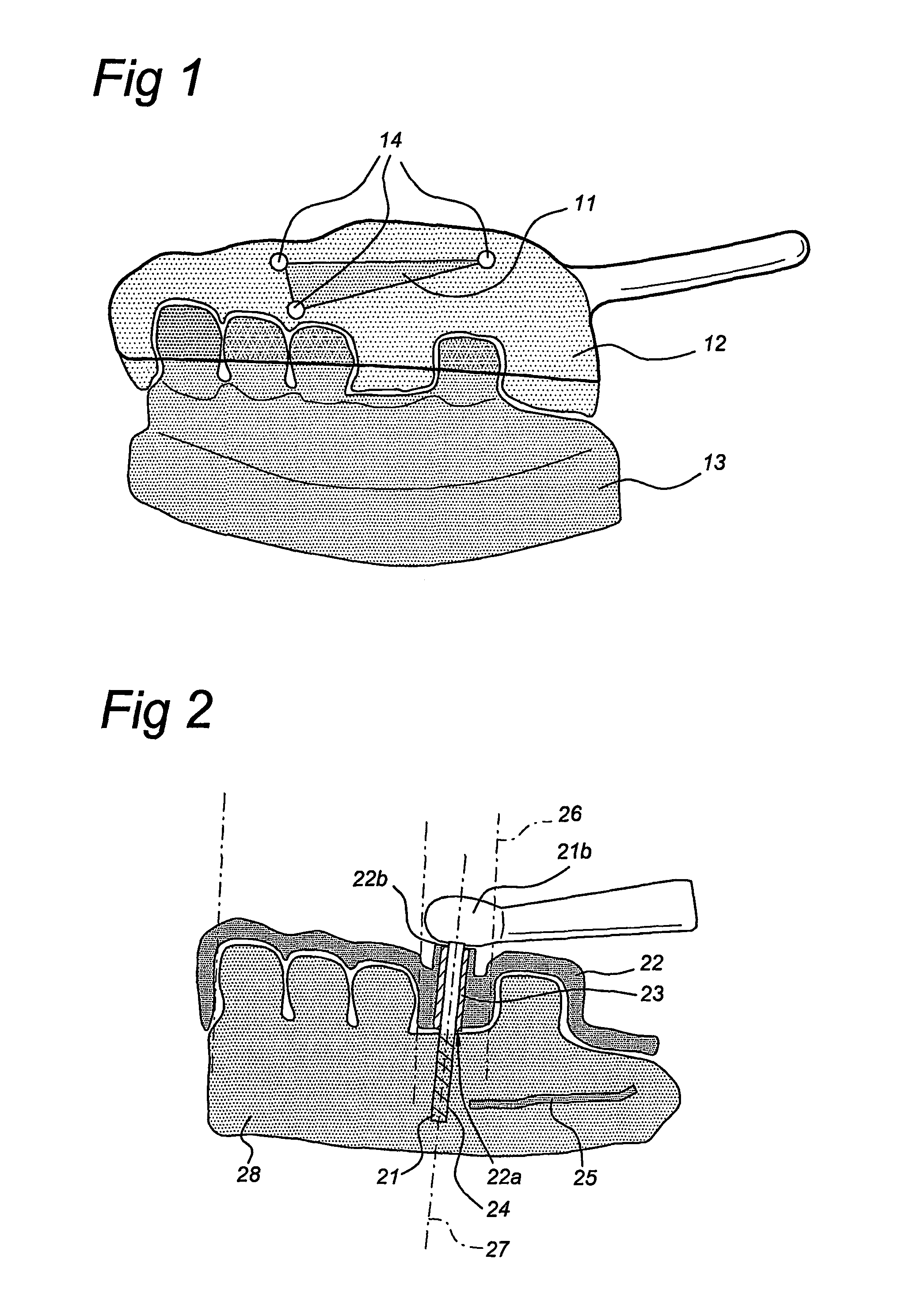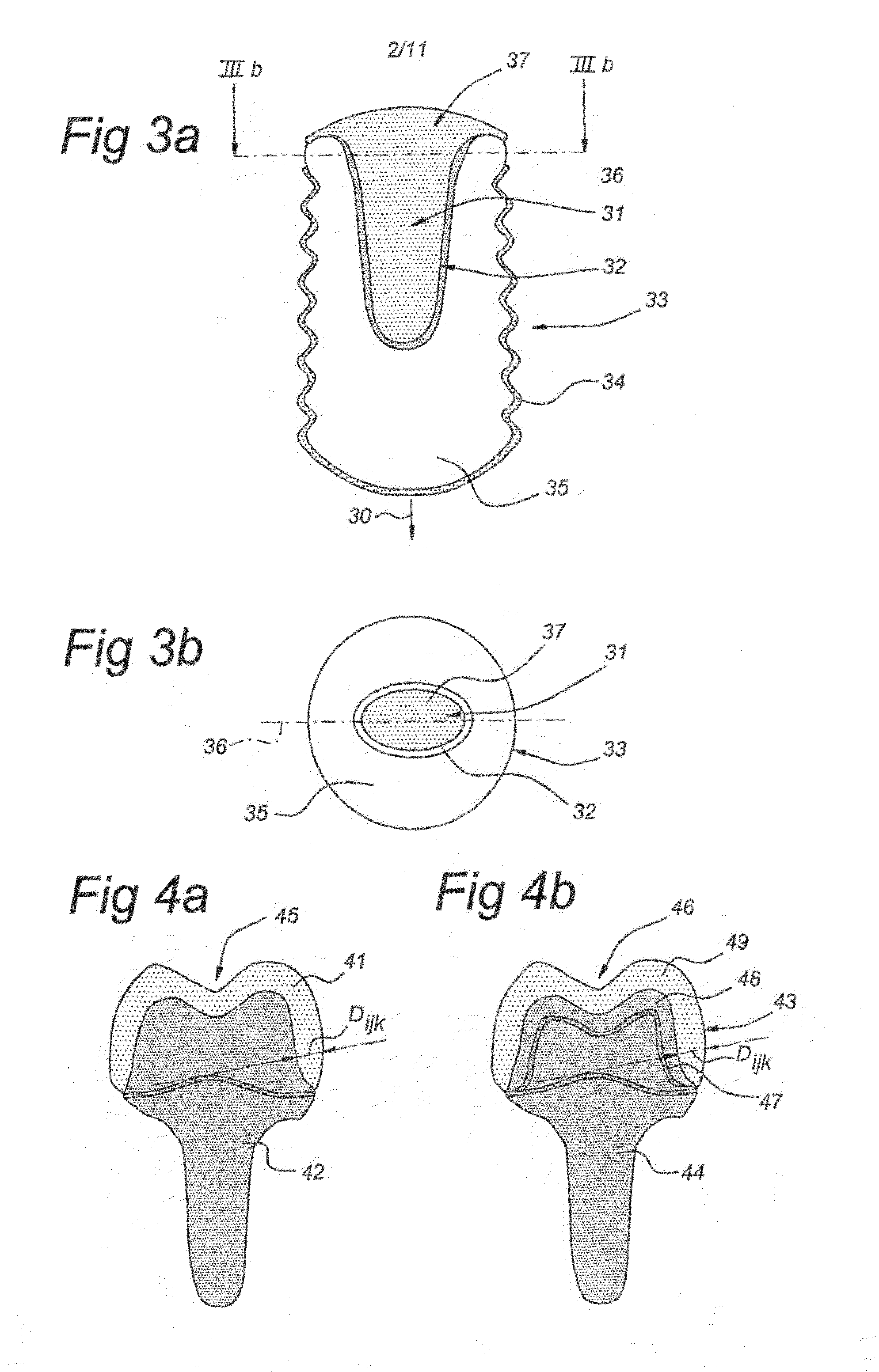Method of manufacturing and installing a ceramic dental implant with an aesthetic implant abutment
a technology of ceramic dental implants and aesthetics, which is applied in the direction of dental prosthesis, boring tools, teeth capping, etc., can solve the problems of difficulty in deciding on the drill axis of the implant, the standard method of preparing the dental restorative system, and the difficulty of the oral surgeon in deciding on the drill axis for the implant, etc., to achieve the optimal loading of the implant and execute the effect of eas
- Summary
- Abstract
- Description
- Claims
- Application Information
AI Technical Summary
Benefits of technology
Problems solved by technology
Method used
Image
Examples
example 1
[0264]Zirconia Compound “PXA100P” of Tosoh Corporation, Tokyo, Japan is pre-mixed with 1000 ppm Fe3+ for pigmentation to a tooth like shade. The mixture has a melting / injection temperature of 190-220° C. and is injection molded in a form which has a retractable part that forms an elliptical female recess to receive the male extension of the abutment core. The wax binder is removed by heating slowly to a temperature of about 450° C. and annealing at that temperature for about 3 hours in air. The implant is pre-sintered at about 800° C. for about 1 hour in air until neck forming has taken place to obtain a porous structure that is stable enough to be handled. The pre-sintered implant is fixed in a precisely vertical position in a dipping machine and submerged in a slurry consisting of a mixture of hydroxyapatite crystals and zirconia in a carrier liquid, containing dispersing agents and binders as four examples show in table 1.
[0265]Hydroxyapatite crystals of 20-50 nm diameter (Alfa-A...
example 2
[0269]An impression is made of the arch to be implanted with a U-form non-opaque tray, filled with silicone, with three zirconia spheres attached in such a way that they are visible when the impression tray is in position. The silicone negative is poured in gypsum. The gypsum cast of the gypsum model is marked where the drill guide should end with black / white contrast for unambiguous scanning of the support area of the guide. Then a registration bite impression is made, while the patient bites in central occlusion. The patient is then scanned by X-ray Cone Beam Computed Tomography with the DVT 9000 of QR s.r.l., Verona (It). During scanning the impression tray with reference spheres is placed in the proper position in the patient mouth. After the CT scan and processing of the measurements, the operator checks whether all three reference spheres are visible in the X-ray image in three views to allow identification.
[0270]The next step in the automated fabrication of a drill guide and ...
example 3
[0287]As an example: For the abutment core with a CIE-lab color: L*=73.6, a*=4.2, b*=19.4, a cover layer of with CIE-lab color: L*=70.6, a*=5.3, b*=21.2 with a thickness of 0.75 mm results at the outer surface in a CIE-lab color: L*=71.1, a*=5.1, b*=22.1, which corresponds with a traditionally measured VITA® lumen shade guide (Vita Zahnfabrik, DE) of “A3” (see also: Dozic, A; Kleverlaan, C J; Meegdes, M; vanderZel, J M; Feilzer A J, The influence of porcelain layer thickness on the final shade of ceramic restorations, J Prosth Dent 2003; 90:563-70).
PUM
| Property | Measurement | Unit |
|---|---|---|
| temperatures | aaaaa | aaaaa |
| temperature | aaaaa | aaaaa |
| diameter | aaaaa | aaaaa |
Abstract
Description
Claims
Application Information
 Login to View More
Login to View More - R&D
- Intellectual Property
- Life Sciences
- Materials
- Tech Scout
- Unparalleled Data Quality
- Higher Quality Content
- 60% Fewer Hallucinations
Browse by: Latest US Patents, China's latest patents, Technical Efficacy Thesaurus, Application Domain, Technology Topic, Popular Technical Reports.
© 2025 PatSnap. All rights reserved.Legal|Privacy policy|Modern Slavery Act Transparency Statement|Sitemap|About US| Contact US: help@patsnap.com



